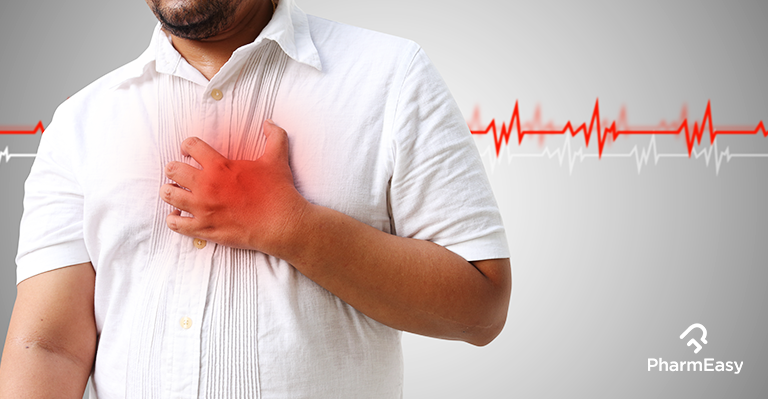4 Different Types of Hypertension You Must know About
By Dr. Nikita Toshi +2 more

Get,

to manage your symptom
Get your,


4 Cr+ families
benefitted

OTP sent to 9988776655



You’ve successfully subscribed to receive
doctor-approved tips on
Whatsapp

Get ready to feel your best.

Hi There,
Download the PharmEasy App now!!


Register to Avail the Offer
Send OTPBy continuing, you agree with our Privacy Policy and Terms and Conditions

Hi There,
Sign up on PharmEasy now!!
Trusted by 4 crore+ families

OTP sent to 9988776655



You have unlocked 25% off on medicines




Code: NU25
By Dr. Nikita Toshi +2 more
Table of Contents
Hypertension is a popular ailment that is quite prevalent amongst the urban population of today. This condition primarily occurs when the blood forcefully pushes against the arteries as the heart pumps.
To measure this pressure, doctors use a Sphygmomanometer which gives the blood pressure reading in millimetres of mercury (mm Hg) and consists of two numbers.

Stage 1 Hypertension occurs when the systolic pressure ranges from 130 to 139 mm Hg or when the diastolic pressure ranges from 80 to 89 mm Hg.
Stage 2 Hypertension, a more severe kind, occurs when the systolic pressure ranges between 140 mm Hg or higher or when the diastolic pressure ranges between 90 mm Hg or higher.
While both these numbers are crucial, for older people, particular emphasis should be laid on the systolic reading. Here you can understand high BP in old age more clearly.
Isolated Systolic Hypertension is a condition that occurs when the diastolic pressure remains normal (below the range of 90 mm Hg), but the systolic pressure shoots up (touches beyond 140 mm Hg). This is a common condition that is observed in people above the age of 60 years.
For almost 90% of the patients, the cause of this Hypertension is unknown. Your doctor will diagnose this Hypertension type after analyzing your blood pressure after three or four visits. People who suffer from this Hypertension type show no significant symptoms. However, a few patients do show the below signs:
This Hypertension type occurs when there is an abnormality in the arteries that supply blood to the kidneys.
Some common causes of this Hypertension include:
Here the blood pressure rises rather quickly and causes a medical emergency where the patient needs to be rushed to the hospital. It is typically observed in small fractions of society such as young African-American men and women with pregnancy toxaemia, to name a few.
Some common symptoms include:
This type of Hypertension is usually observed in people who are aged, obese or are suffering from diabetes or kidney ailments.
Uncontrolled hypertension is usually a cause of heart disease, stroke or vision problems, appropriate diagnosis and optimal management is crucial and warranted.
Dr. Ashish Bajaj, M.B.B.S., M.D. in Clinical Pharmacology and Toxicology
When suffering from hypertension, your healthcare provider will advise you to control your blood pressure by making a few tweaks to your current lifestyle. he/she will understand your case and history thoroughly and will come up with a plan. Some of the common lifestyle;e changes suggested to regulate high blood pressure are as follows:
Uncontrolled HTN which is due to late detection, leads to kidney, retinal and brain damage. Regular screening of Blood pressure is a must for people aged more than 30 yrs.
Dr. M.G. Kartheeka, MBBS, MD(Pediatrics)
Quitting the habit of smoking not only lowers your blood pressure instantly but also keeps you safeguarded from various heart diseases.
The role of caffeine in increasing your blood pressure is debated. However, having too much caffeine can impact your health in other ways which can add stress and contribute to increasing hypertension. For a healthy lifestyle limit your intake of caffeine, if the source is coffee, to one or a maximum of two cups a day.
Alcohol consumption can be beneficial for lowering your blood pressure only when it is limited to one or two glasses a day. If consumed in excess, it can increase your blood pressure.
Also Read: What is Pulmonary Hypertension?
Disclaimer: The information provided here is for educational/awareness purposes only and is not intended to be a substitute for medical treatment by a healthcare professional and should not be relied upon to diagnose or treat any medical condition. The reader should consult a registered medical practitioner to determine the appropriateness of the information and before consuming any medication. PharmEasy does not provide any guarantee or warranty (express or implied) regarding the accuracy, adequacy, completeness, legality, reliability or usefulness of the information; and disclaims any liability arising thereof.
Links and product recommendations in the information provided here are advertisements of third-party products available on the website. PharmEasy does not make any representation on the accuracy or suitability of such products/services. Advertisements do not influence the editorial decisions or content. The information in this blog is subject to change without notice. The authors and administrators reserve the right to modify, add, or remove content without notification. It is your responsibility to review this disclaimer regularly for any changes.

Leave your comment...
Comments